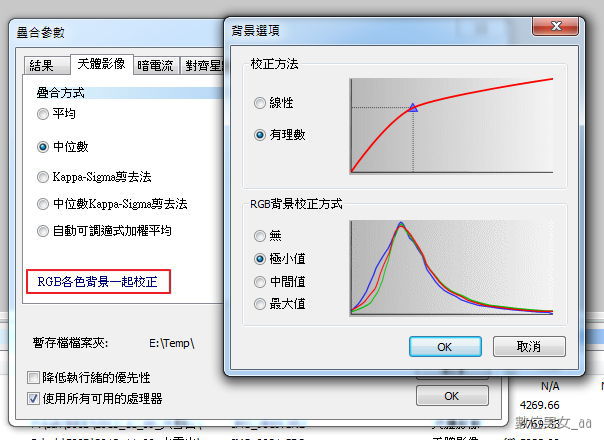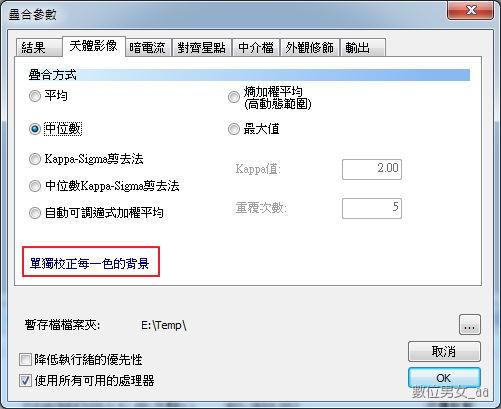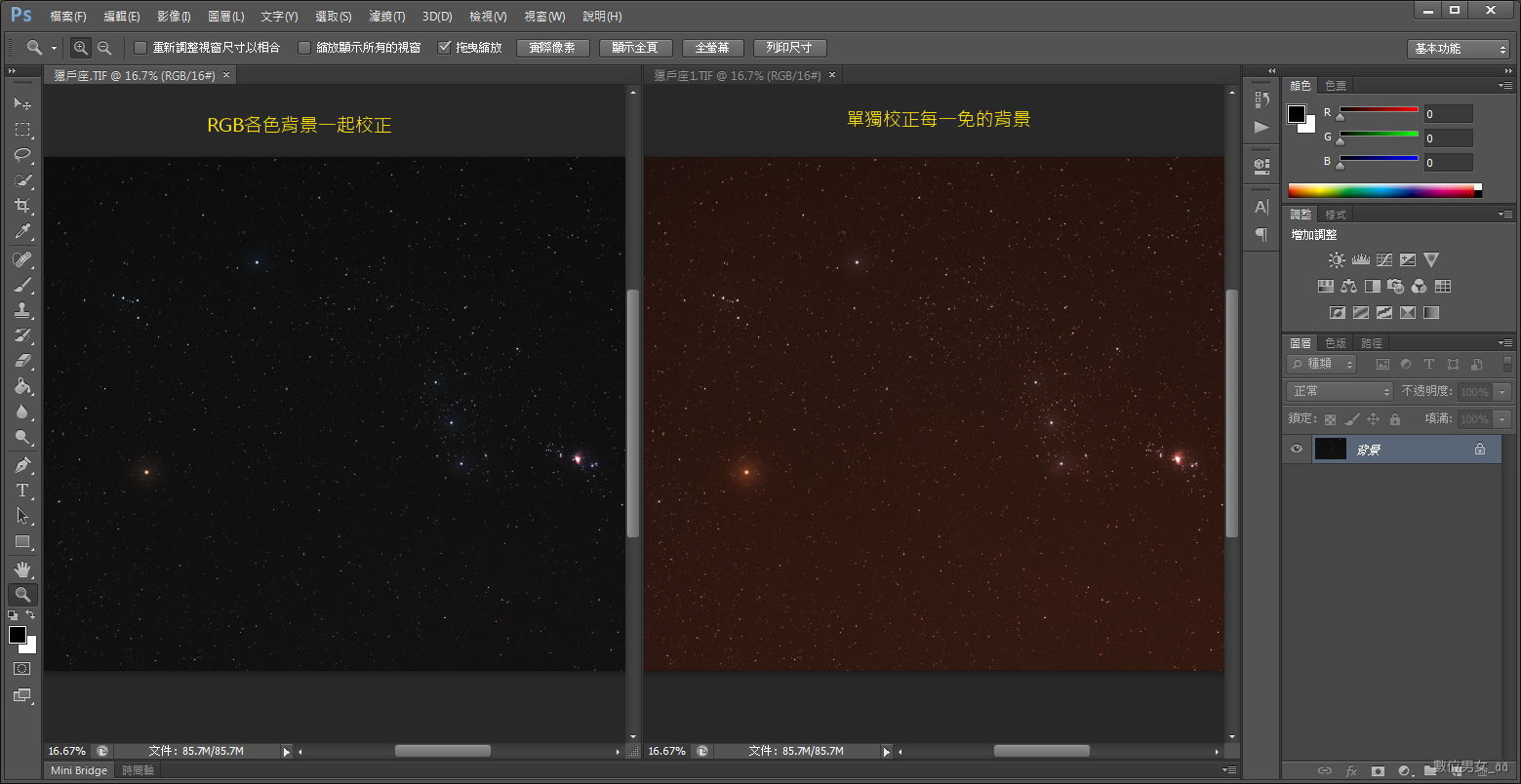這幾天看到網路上一篇 DSS 的教學
他在疊圖時,背景校正設定為"RGB各色背景一起校正"

天體疊合用"中位數"是看那篇斆學中提到的
常規的圖片疊加,選擇第一項average(算術平均)就可以。如果有若干照片存在不嚴重的拉線,或者星點因為陣風的關係變得不規則,可以選擇第二項median(中位數)。之前我都是用 "單獨校正每一色的背景"

以下是兩個疊出來的比較

可以明顯看出左邊的顏色是黑底的
而右邊偏紅,依那個教學的說法
用"RGB各色背景一起校正" 是因為(深空天體的背景色應當是中性灰)
另外在 RAW/FITS 數位顯像設定中也有一個"白平衡"的設定
可以選擇"自動白平衡"或"相機白平衡",這個在那篇教學中有說明
對於白平衡的設置,一般深空攝影會選擇第一項使用自動白平衡。對於銀河、星座攝影通常選擇第二項使用相機白平衡,否則出的照片可能會缺乏色彩,但是在拍攝時,相機上需要有正確的白平衡設置才行。 
其他還可以設定常規使用的時候選擇BINLINEAR INTERPOL,輸出的將是原圖大小(bin1x1)的彩色圖
象。快速疊加可以勾選第4 個項,輸出圖像的長度和寬度會減半,但信噪比會提高。這就是
2X2 拼像素(前面說到過的bin2x2) ,正方形區域的相鄰4 個像素會被拼成1 個像素。真正
意義上的BIN操作4 個像素內的數值將相加,但有些軟件是取算術平均。
以下是各種狀況的疊圖結果


我發現用 "RGB各色背景一起校正" 後,巴納德環調不太出來
而用 "單獨校正每一色的背景" 比較好調出巴納德環
上官網查了一下這個設定的差別
http://deepskystacker.free.fr/english/t...groundcalibrationStacking
Background Calibration
The Background Calibration consists in normalizing the background value of each picture before stacking it.
The background value is defined as the median value of all the pixels of the picture.
Two options are available.
With the Per Channel Background Calibration option the background for each channel is adjusted separately to match the background of the reference frame.
With the RGB Channels Calibration the three red, green and blue channels of each light frame are normalized to the same background value which is the minimum of the three medians values (one for each channel) computed from the reference frame. On top on creating compatible images (stacking wise) this option is also creating a neutral gray background. A side effect is that the overall saturation of the stacked image is quite low (grayscale look).
It is important to check one of these options when using Kappa-Sigma Clipping or Kappa-Sigma Clipping Median methods to ensure that the pictures being stacked have all the same background value
用"RGB各色背景一起校正" 有一個副作用就是疊合影像的整體飽和度是相當低的所以可能要在 PS 中把飽和度拉高,才可以看到原來的色彩










